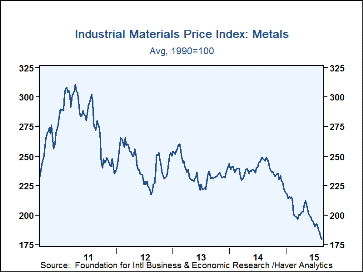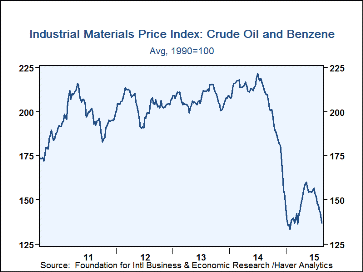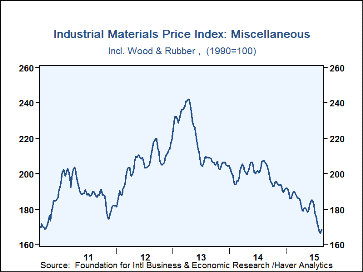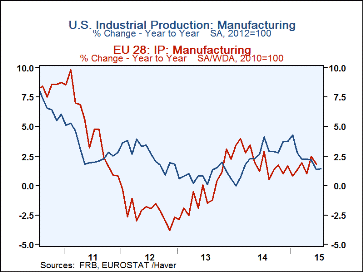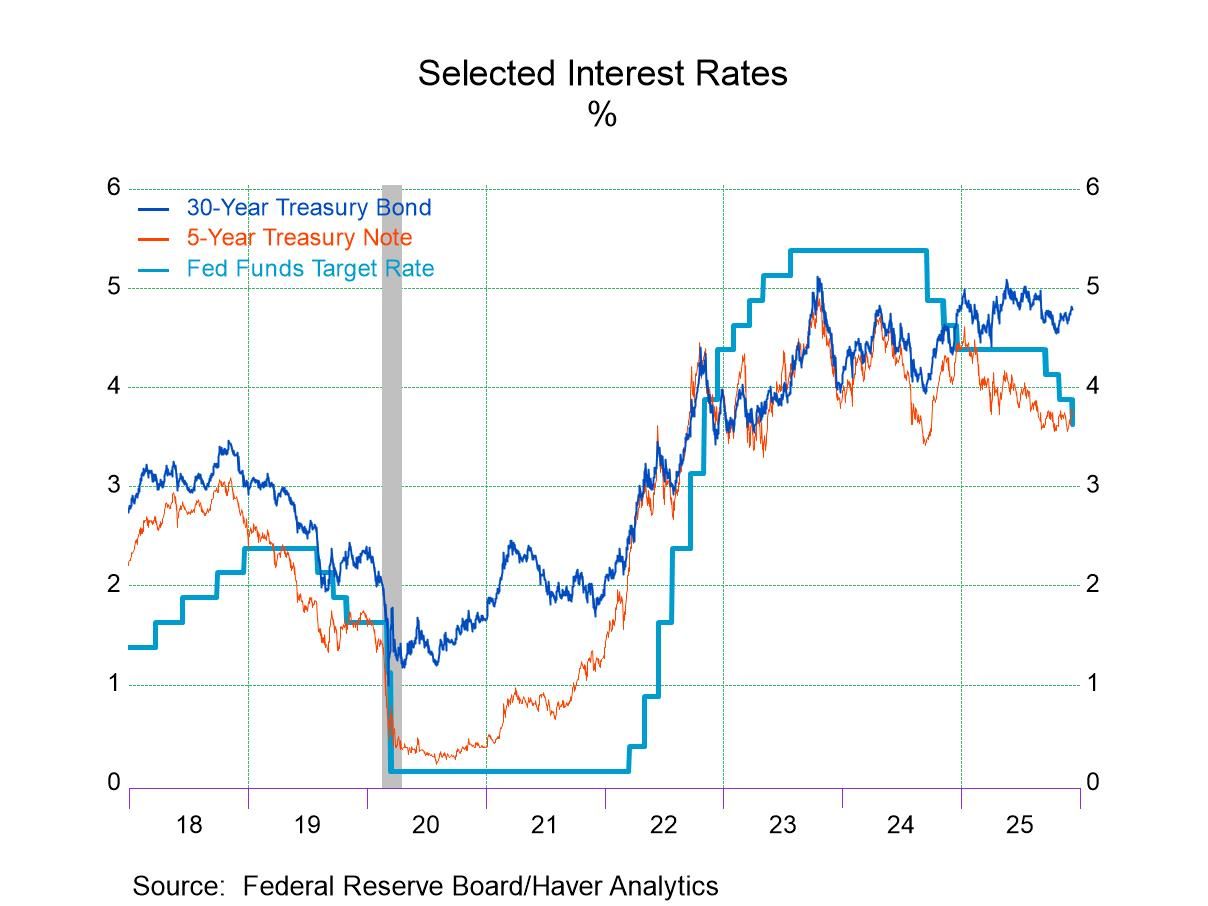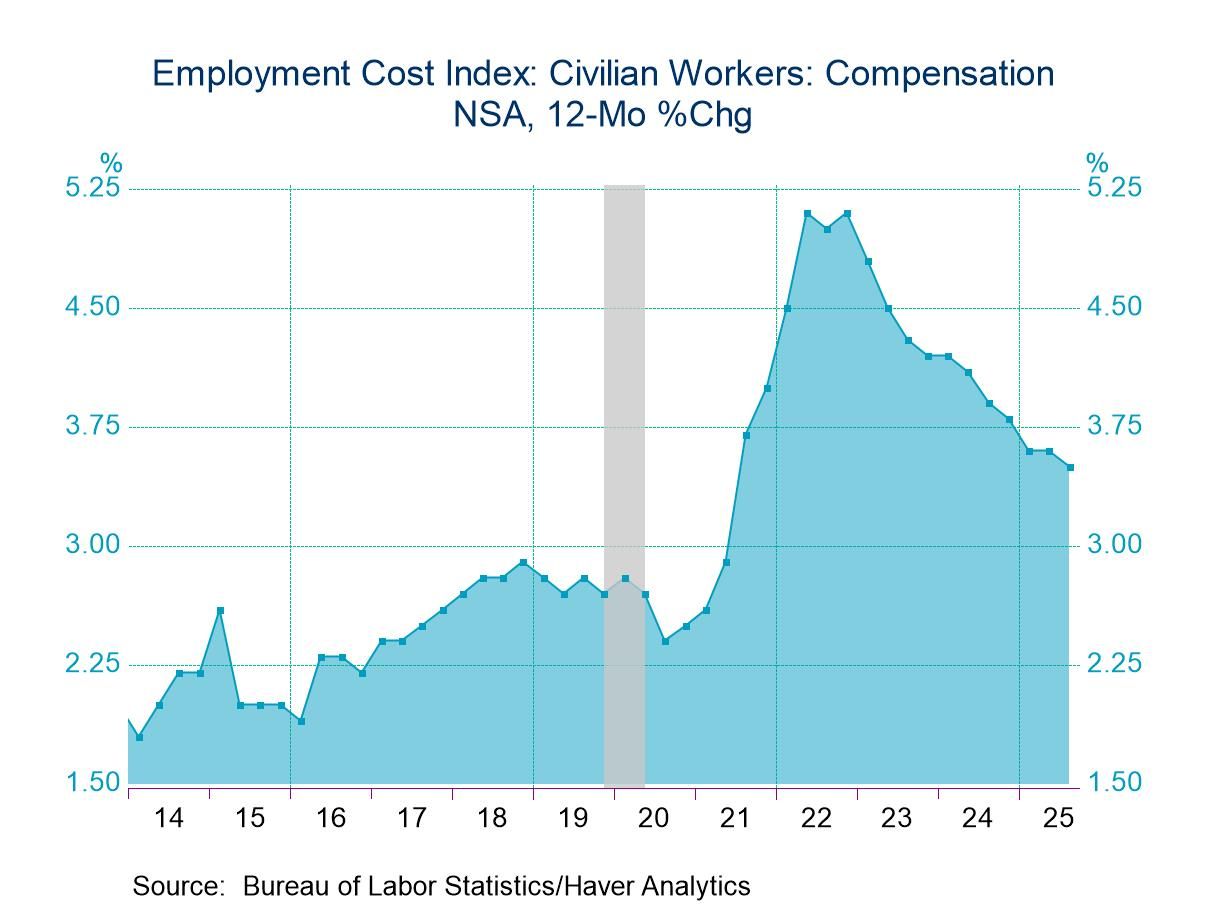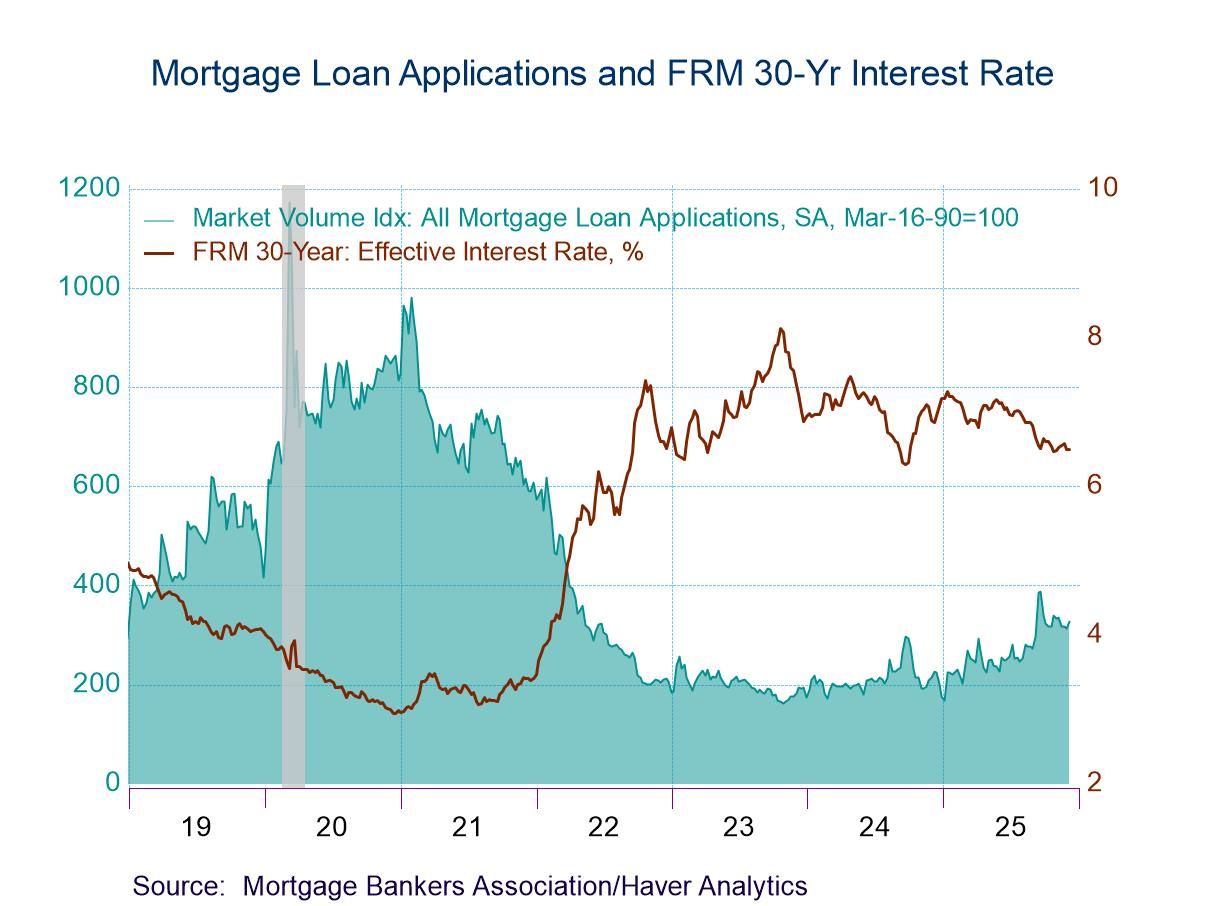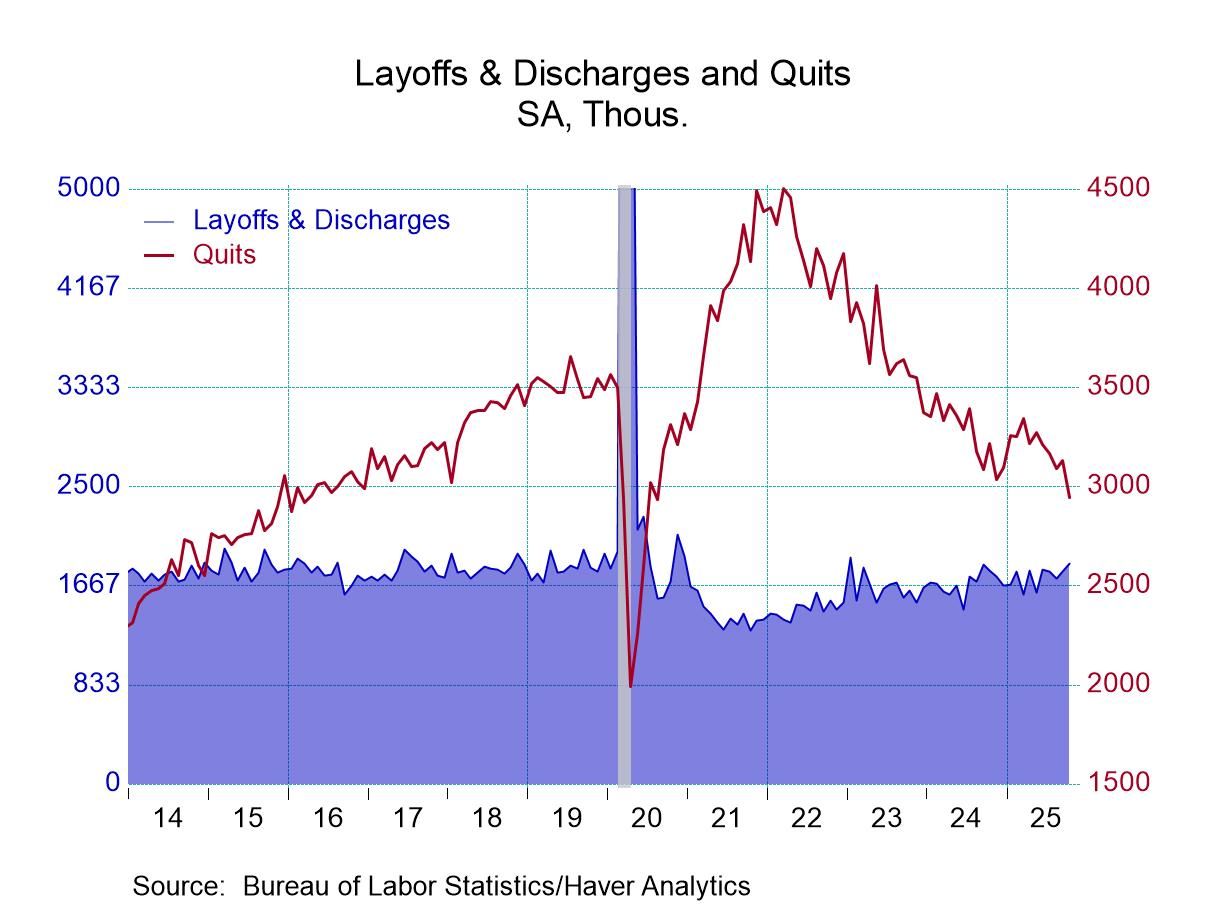 Global| Aug 21 2015
Global| Aug 21 2015FIBER: Industrial Commodity Prices Post Broad-Based Declines
by:Tom Moeller
|in:Economy in Brief
Summary
Global economic weakness is causing a pronounced decline in industrial commodity prices. The industrial commodity price index from the Foundation for International Business and Economic Research (FIBER) deteriorated last month by [...]
Global economic weakness is causing a pronounced decline in industrial commodity prices. The industrial commodity price index from the Foundation for International Business and Economic Research (FIBER) deteriorated last month by 4.6%. In the U.S. alone, a 0.8% rise in factory sector production during July left output so far this year up a modest 0.5% and 1.4% versus during the last twelve months. That's down from 2.5% growth in 2014 and from 2.5%-to-6.0% growth rates from 2010 to 2012. Growth abroad similarly remained weak.
Within the sector groupings of prices, the FIBER measures show broad-based weakness. In the crude oil & benzene grouping, strong shale oil and Saudi Arabian output drove the price for a barrel of WTI crude oil near $50.00 during July. Yesterday's price was even weaker at $40.50. Prices for the petro-chemical benzene also were down by nearly one-half y/y. In the metals sector, prices continued to weaken as demand remained soft. Steel scrap prices neared their recession low (-41.9% y/y) as did aluminum prices, off 10.8% y/y. Copper scrap prices also fell to the lowest level since mid-2009 (-23.6% y/y) and lead prices similarly remain depressed, off 16.4% y/y. In the miscellaneous price grouping, framing lumber prices remain under pressure but the degree of weakness (-15.1% y/y) is being softened by firmer home building in the U.S. The same is true of prices for structural panels (-5.2% y/y). Natural rubber prices continue to weaken, off one-third in the last year. Prices in the textile sector also showed comparative strength, posting just a 3.5% decline during the last year. Cotton prices have trended sideways this year, but they are down by one-quarter y/y, while burlap prices (+12.2% y/y) continued to improve versus the 2013 low.
Support for commodity prices may be on the way. The current industrial output projection from the National Association for Business Economics calls for 2.3% U.S. production growth in 2015 followed by a 3.0% rise next year. This year's projected increase is diminished, however from earlier expectations. During the last ten years, there has been a 52% correlation between the three-month change in prices and the change in industrial output.
Commodity price data can be found in Haver's DAILY, WEEKLY, USECON and CMDTY databases.
| FIBER Industrial Materials Price Index (1990=100) | 08/20/15 | 1-Mth % | 3-Mth % | 6-Mth % | Y/Y % | 2014 | 2013 | 2012 |
|---|---|---|---|---|---|---|---|---|
| All Items | 134.1 | -4.6 | -6.7 | -11.6 | -19.3 | 163.5 | 169.0 | 166.3 |
| Textiles | 75.38 | 0.4 | 0.9 | 2.6 | -3.5 | 76.8 | 78.2 | 77.8 |
| Cotton (cents per pound) | 62.36 | 1.1 | 2.1 | 9.5 | -26.1 | 73.6 | 79.6 | 74.4 |
| Metals | 194.55 | -5.3 | -12.0 | -21.9 | -23.2 | 237.8 | 236.2 | 242.7 |
| Aluminum ($ per metric ton) | 1,660.10 | -6.1 | -16.0 | -22.0 | -10.8 | 1,864.9 | 1,846.7 | 2,016.6 |
| Copper Scrap (cents per pound) | 252.10 | -6.8 | -15.4 | -22.7 | -23.6 | 311.7 | 332.3 | 360.3 |
| Steel Scrap ($ per ton) | 247.27 | -15.5 | -7.6 | -31.8 | -41.9 | 358.3 | 345.8 | 366.5 |
| Crude Oil & Benzene | 154.76 | -11.4 | -11.8 | -15.7 | -36.9 | 205.2 | 207.7 | 204.0 |
| Crude Oil (WTI, $ per Barrel) | 51.82 | -22.6 | -27.8 | -33.6 | -59.6 | 93.5 | 97.9 | 94.2 |
| Miscellaneous | 185.08 | -4.8 | -5.7 | -10.9 | -18.0 | 199.6 | 218.3 | 205.2 |
| Framing Lumber ($ per 1000 board ft.) | 348 | -6.6 | -3.0 | -10.9 | -15.1 | 383 | 383 | 321 |
| Natural Rubber (cents per pound) | 122.61 | -10.9 | -10.1 | -1.9 | -33.5 | 140.2 | 190.0 | 21.8 |
Tom Moeller
AuthorMore in Author Profile »Prior to joining Haver Analytics in 2000, Mr. Moeller worked as the Economist at Chancellor Capital Management from 1985 to 1999. There, he developed comprehensive economic forecasts and interpreted economic data for equity and fixed income portfolio managers. Also at Chancellor, Mr. Moeller worked as an equity analyst and was responsible for researching and rating companies in the economically sensitive automobile and housing industries for investment in Chancellor’s equity portfolio. Prior to joining Chancellor, Mr. Moeller was an Economist at Citibank from 1979 to 1984. He also analyzed pricing behavior in the metals industry for the Council on Wage and Price Stability in Washington, D.C. In 1999, Mr. Moeller received the award for most accurate forecast from the Forecasters' Club of New York. From 1990 to 1992 he was President of the New York Association for Business Economists. Mr. Moeller earned an M.B.A. in Finance from Fordham University, where he graduated in 1987. He holds a Bachelor of Arts in Economics from George Washington University.



